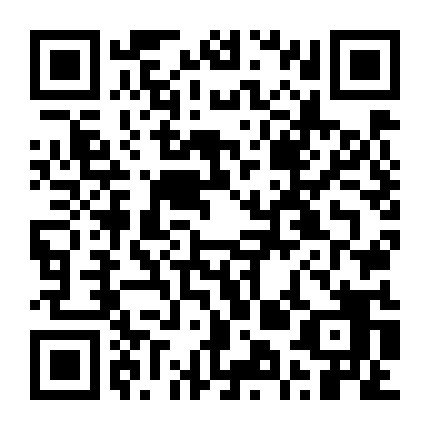Probably one of the most daunting challenges for newcomers to China is how to deal with the cross cultural issues they face. Most new managers already have a track record of success in their industry or function, so they feel comfortable in their area of expertise. But, how to accomplish their goals in China is another story. From the beginning there may be misunderstandings based on cultural issues. Chinese employees may have expectations and concerns that are different from their counterparts in other parts of the world. And, there are likely to be new and different dynamics with the home office once a manager is established in China. These are common challenges, and by taking the lead, setting the right environment, and taking advantage of the lessons learned by those who have successfully managed their own cultural challenges, newcomers can develop skills and techniques for managing cultural challenges well.
First Steps
At first, the challenges for newcomers to China may seem large, numerous, and ambiguous. The most typical cross cultural challenges in China are related to the usual misunderstandings and lack of deep knowledge of others all new teams face, but they are compounded by the fact that the people who need to work together come from different backgrounds with different experiences and different perspectives of the world. In simple terms, our cultural challenges stem from situations where those who can help may not understand what is needed and so they cannot offer the correct support.
For example, no one can be totally independent working in a multi-cultural environment until they can communicate in the local language and that learning curve can be very long sometimes. Old, even ancient, habits are difficult and painful to break. For example, Asians prefer indirect communication, emails, talking through intermediary persons, etc., and Westerners much prefer direct communication. This is especially true in the technical and scientific environments so common today.
We all have stereotypical ideas of others, we can’t help it, and those ideas may or may not be useful. The same is true for how we live out our values. For example, Asians value age and authority and Westerners stay focused on the bottom line. Both ways of looking at a situation can be starting point for our conversations about how to learn from each other, but they can get in the way as well.
Managing Expectations
Another challenge for newcomers to China is the different set of expectations of Chinese employees. It is often true that bright, younger, and more ambitious Chinese employees focus most on money, family, friends, and colleagues, and status. What they need to achieve at work can easily be set aside when all of these priorities come first.
Chinese employees worry about if they have a chance in their company. As a Chinese people they know the history of serial occupation of their country by foreigners, so they wonder if the company really trusts them and their team and what they can do to gain that trust in a company culture that is unfamiliar to them. They are used to a more paternalistic leadership style, so they are not sure what or how much will change with a new boss. They have heard about the speed of change in foreign companies, and they may not have experienced much change themselves at work yet, so they could be anxious about having adequate time to adjust to the changes they know they will be asked to make. And, since appearances are so important in relationships in China, they will be concerned about what will happen to them if they do or say something wrong?
Building a Multicultural Team
Newcomers also may be surprised to face hidden company cultural issues embedded in headquarters / field dynamics. Whenever those who make the final decisions are not in direct contact with the local situation, this dynamic applies, no matter what culture people are from. Because they are at the face of the customer and must deal with all of the minor changes and innovations involved with daily work, people in the field are typically changing at a faster rate than those at the headquarters.
Changes happen at headquarters, too, but those changes are so subtle they may be difficult for those in the field to understand. Likewise, insights from the field may be difficult for decision-makers in headquarters to understand and so they might not be valued right away. Some people might have a difficult time comprehending the challenges posed by time zone, holiday, and work norm differences. It really does matter if phone calls are scheduled on a Friday night or if conferences are booked during a major local holiday.
While many companies are taking advantage of wonderful technologies to bring geographically dispersed groups together; ‘out of sight, out of mind’, still holds true for many organizations. Without traditional visibility, good work and good people outside of headquarters or regional head offices may be overlooked. And, people may have good intentions to spare others from overseas meetings, late night conference calls, and home office conflicts, but these experiences are the building blocks of strong teams and the basis of the kind of trust that supports effective decision making. Missing these close experiences can have a longer term impact than most people realize.
So, what can new managers do to manage these cultural challenges well? A good starting place is to conduct a New Boss Orientation Meeting with the Chinese staff to bring some of these issues out in the open from the very beginning. Be honest about why you took the new position, what you expect the team to accomplish, and how you think you will all go about it. Set the tone for the team and share your work style with them. Explicitly state what you expect from people who work for you and work with the team to develop the work processes you think will be most successful.
Clarify everyone’s roles and responsibilities, including your own. If there is resistance on the team, it is most likely to be related to the team’s difficulty adapting to changes quickly, their lack of clarity about what or how to accomplish key tasks, or personal concerns. These topics may be difficult for Chinese staff to talk about until they know their boss well, so it is better for the manager to take the initiative to solve the problem.
Take the time to look for and seize opportunities for team building and teachable moments that support the desired team culture. A more focused and continuous development process will improve the skills and knowledge of team faster and result in more goals achievement, more employee satisfaction, and greater employee loyalty.
East Meets West
Successful managers in China manage cultural challenges by adjusting how they work with their teams. Be aware of and share your own style, cultural elements, and personal preferences and develop a hunger to learn the same about others. Start learning the language as soon as possible to build some level of independence and to understand the Chinese culture more completely. Build a strong support system and develop healthy stress relief habits. Champion the team, develop their skills and support them publically to other groups, especially to headquarters, even as you guide them privately.
This kind of leadership style is the kind of East-West combination that garners respect from most Chinese employees. Be decisive, but reinforce the company culture by explaining the reasons why you make decisions. This will help them understand why you might ask for their advice but not appear to take it. It also provides an opportunity to train the team for how to make decisions in your company as they progress in their own careers. Finally, find a cultural mentor to help you understand things like how to maintain harmony on the team, how to use social situations to build business, and how to blend in with the China team, and with Chinese customers, a little better.
No matter what culture you are from, working with people who are different from ourselves has its own special challenges. We know that it is profitable, because we can add our strengths together to be more than we would be if we kept to our own way of seeing things. It is exciting, challenging and fun to learn about and to work with people from different cultures. It is eye-opening and mind-opening as our intercultural experiences give us opportunities to see the world in other ways. It can be frustrating when we do not know what others want, need, or are trying to communicate, and it can be lonely at times because it takes awhile to truly become comfortable with these differences.
Most people say the experience is enriching, though, and that working on intercultural teams is the best job experience they ever had; even if, and sometimes because, it is a little overwhelming sometimes.
This article was published by the American Chamber of Commerce in Shanghai. A frequent speaker in public forums addressing techniques for learning solutions design, effective corporate training practices, and creativity in the workplace, Debbie is a Principle Consultant with China Bridge and is writing a book in partnership with Cathy Huang, the company founder, addressing the unique learning needs and solutions of innovative teams.
Since 2000, Debbie has worked with multinational companies in Asia, the US, Europe, and South Africa developing, facilitating and coordinating individual and team development efforts. Prior to her work in Asia, Debbie worked in the US for 20 years in various positions in the fields of Human Resources Consulting, Sales, and Education. Debbie currently lives in Shanghai, China and volunteers as the Chair of the Shanghai American Chamber of Commerce Training and Education Committee.


